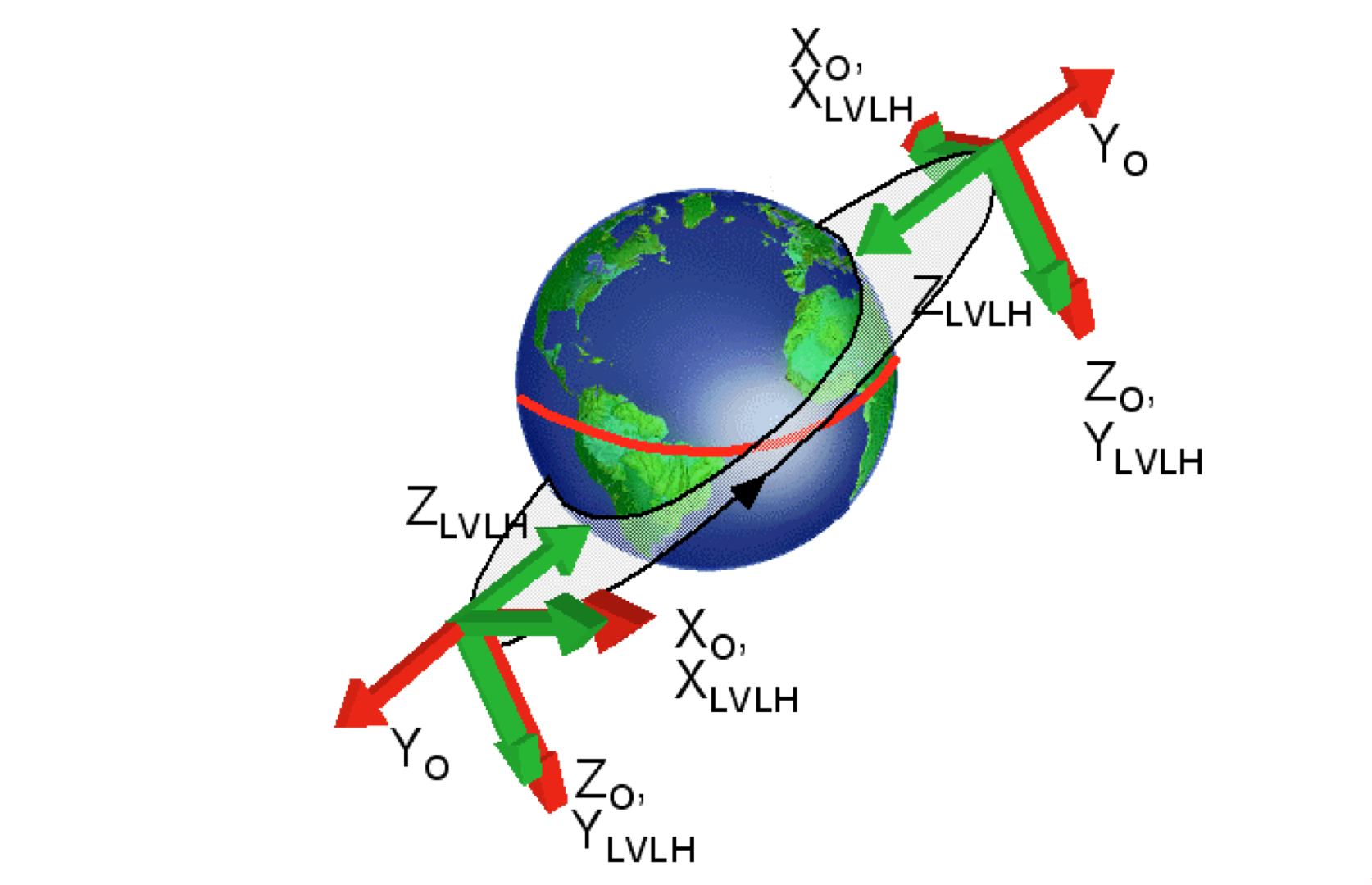We all know ISS is orbiting the earth so it has translational motion, but, does it rotate on its own axis as well? Thanks
2 Answers
Yep! Since the same side of the ISS is always facing down towards the earth, every time it orbits once around the Earth, it rotates once around its axis.
Actually, every time an ocean liner travels around the Earth once, it has also rotated around it's port-stern starboard axis. A better example would be a plane, it slowly rotates around the axis through it's wings as it travels around the Earth.
There are some nice images in some of these Quora answers.
Actually I will repost one of them here. The ISS is traveling in the direction of it's own $X_{LVLH}$ axis, and so it rotates about it's $Y_{LVLH}$ axis once per orbit. LVLH stands for "Local Vertical, Local Horizontal."
above: ISS spacecraft directions, from NASA.
-
1$\begingroup$ You could add that it rotates around the orange axis $\endgroup$– InnovineCommented Jan 8, 2017 at 17:26
-
1$\begingroup$ Interesting. The maximum acceleration in the pressurized areas (at 36 m from the axis) is about 5x10^-5 m/s2. So I guess that would be one limit on how good the microgravity is, unless you do experiments right at the axis. $\endgroup$– user687Commented Jan 8, 2017 at 18:07
-
3$\begingroup$ I think you mean port-starboard axis, stern=rear end $\endgroup$– AustinCommented Jan 8, 2017 at 18:59
-
$\begingroup$ @Austin all I know is when I used to go fishing there was an oar on the left and an oar on the right, and sometimes an engine in the back. Thanks for the heads-up, I've made an edit. $\endgroup$– uhohCommented Jan 9, 2017 at 0:48
-
2$\begingroup$ @Innovine there are over 10,000 users here. How do you know which answers are helpful to which users? For me, equations are a second form of communication. Equations can be explainers ('oh ya, it's quadratic in x, now I get it") or even reminders or mnemonics to recall distant memories of what we once learned in school. Don't knock the (correct) use of equations, and don't worry if people get points you don't think they "deserve". It's a big world and there's room for (almost) everybody. $\endgroup$– uhohCommented Jan 9, 2017 at 6:59
One thing should be emphasized: unlike an airplane, the rotation of the ISS is intentionally set at one rotation per revolution, so its solar panels are facing the Sun most of the time. Both the rotation and the revolution are usually adjusted every time it has to dock with another spacecraft.
-
1$\begingroup$ Note that the solar arrays and the core rotate independently (rotary joints at S3 and P3 modules), so the core is 1 rot per rev, but the solar panels can be 0 rot per rev for max power, or: sun slicer is 1 rot per rev for min drag, night glider uses the low drag orientation only when in Earth-shade, and a max drag orientation can be used to lower the orbit. $\endgroup$– amICommented Jan 19, 2020 at 3:08

